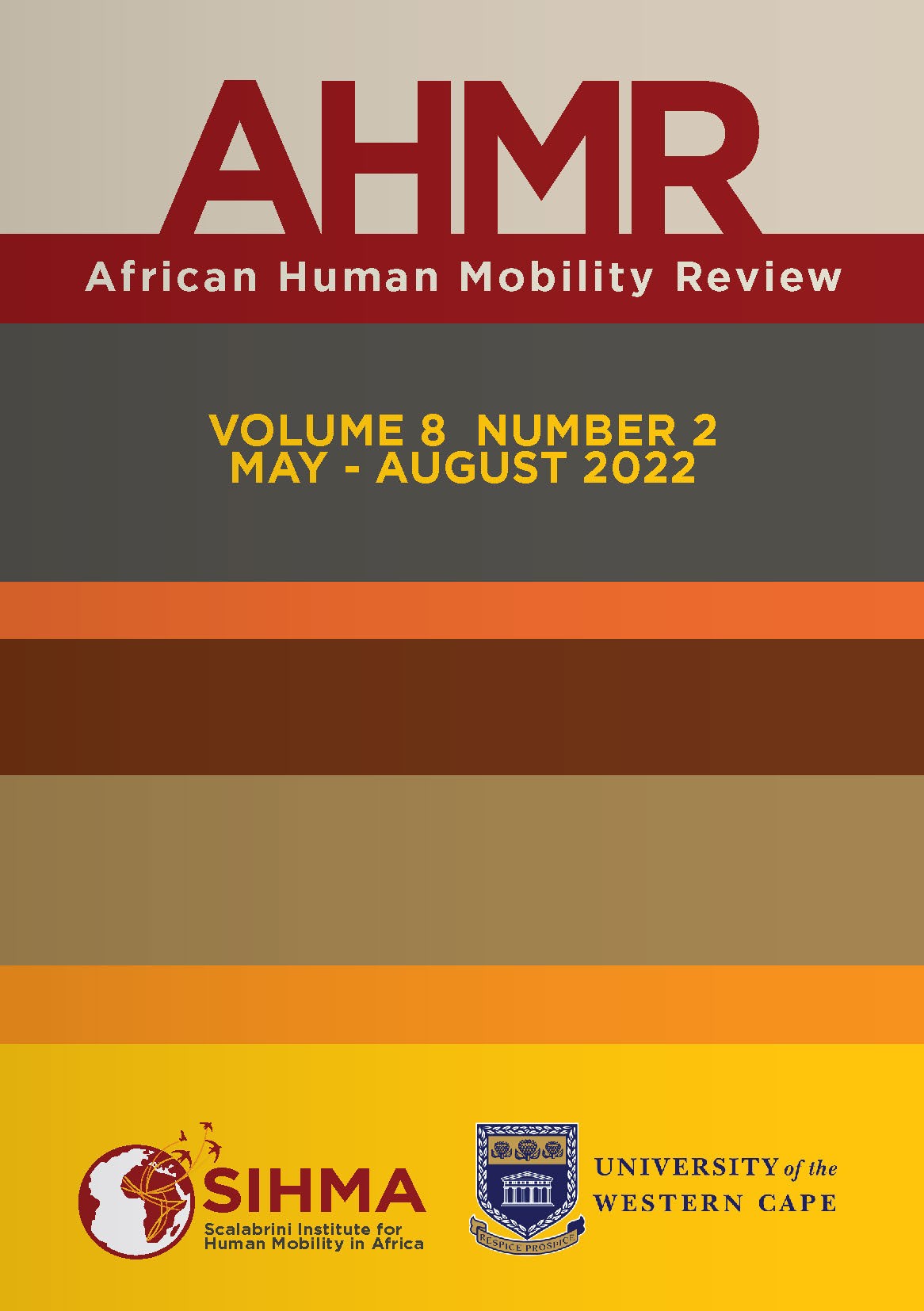
AHMR Volume 8 Number 2 May - August 2022
Published by: Scalabrini Institute for Human Mobility in Africa
This issue consists of a book review and five articles that promote the practice of original research and policy discussions and provides a comprehensive forum devoted exclusively to the analysis of contemporaneous trends, migration patterns, and some of the most important migration-related issues in Africa. The review was made by Daniel Tevera on a book entitled “Citizen and Pariah”, by Vanya Gastrow. The reviewer made a critical and scholarly evaluation of the entire book.
The first article by Derek Yu is entitled “The Impact of International Migration on Skills Supply and Demand in South Africa”. Using a quantitative method of research that involved the use and analysis of data from Census 2001 and 2011 as well as Community Surveys 2007 and 2016. This is the first study in South Africa that compares natives and immigrants with emigrants. The study also provides stakeholders and policymakers with insights to better identify the priority critical skills needs of the country – critical skills that are lost, and skills that are in great demand but in short supply – so that these skills needs can be prioritized when issuing work and residence permits to immigrants.
The second article by Emmanuel Quarshie, Imhotep Paul Alagidede, Albert Duodu, and Edwin Teye Sosi is entitled “Moonlighting Behavior among Migrants: Determinants and Implications for Well-Being in South Africa”. The study applied quantitative research methods to measure the key determinants of moonlighting, defined as a “situation where an individual maintains primary employment and engages in additional work for pay”.
The third article by Sylvester Kyei-Gyamfi is entitled “Fish-for-Sex (FFS) and risk of HIV Infection among Fishers in Elmina Fishing Community in Ghana”. Methodologically, this paper is based on a cross-sectional study to investigate a relationship between human mobility and HIV risks among 385 fishers in Elmina. The theory of gender and power (TGP) was used to address the wider social and environmental issues surrounding women.
The fourth article by Francis Anyanzu and Nicole De Wet-Billings is entitled “Destination Substitution and Social Networks among Urban Refugees in Kampala, Uganda”. This study is a cross-sectional survey that was conducted in Kampala, Uganda, with respondents drawn from the Somali, Congolese (DRC), Eritrean, Burundian, Ethiopian, South Sudanese, and Sudanese refugee communities. The researchers employed non-probability sampling strategies due to the hidden or transient nature of the urban refugees.
The fifth article by Jacqueline Owigo is entitled “Returnees and the Dilemmas of (Un)sustainable Return and Reintegration in Somalia”. The research employed a qualitative research design involving semi-structured interviews conducted in Mogadishu, Somalia and Nairobi, Kenya. This study was grounded in two strands of literature, namely, the sustainable return and reintegration as well as the theoretical studies on the aspirations/ability model.
I would like to thank all Board Members, editors, reviewers, authors, and readers for their continued engagement. Finally, I am confident that the African Human Mobility Review, Volume 8, Number 2, 2022 provides a significant resource for scholars, practitioners, and students.
Extract from the Editorial
Categories:
Tags:

